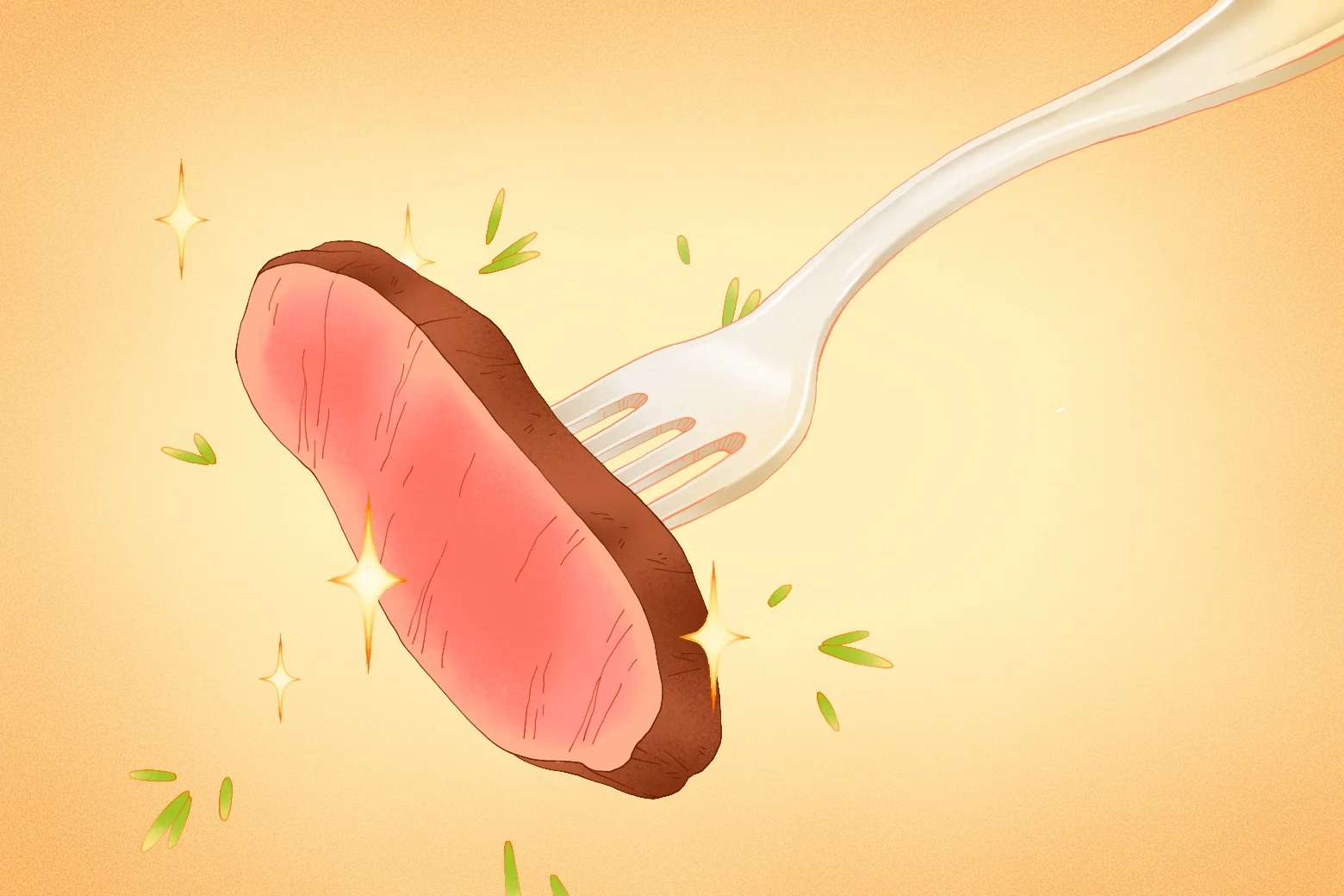
Sign up for the Slatest to get the most insightful analysis, criticism, and advice out there, delivered to your inbox daily.
About 14 years ago, my friend Eren and I were eating dinner upstairs at the bar of some two-story restaurant in New York’s NoHo neighborhood that was supposed to be the new hot thing. We’d been downtown running errands, gotten hungry, and autopiloted there on a wave of online restaurant reviews. Looking around the deafening dining room’s banquettes full of overengineered outfits, lamenting the apparent extinction of the under-$10 glass of wine, Eren and I admitted to each other that neither one of us was into this. At all. The restaurant, the name of which I’ve forgotten, is long gone, but at that moment in time, it was marketed everywhere as cool. But cool, when it comes to dining out, is visceral, and this did not strike either of us as cool, just loud and overpriced. We sat at the bar and talked about the normal places we actually liked; tasty, untrendy, mostly filled with regular schmoes like us. Secret-feeling mainly by dint of hiding, often behind mediocre lighting and sort of frumpy decor, in plain sight.
We were in our late 20s, closer to an age at which, to stereotype, you’d care at least a little bit about seeing the inside of this or that supposedly hot place at least once, at least to form your own judgment. Now I’m 40, and I can’t imagine a worse way to deliberately spend an evening out. I left New York for Berlin in 2014, and when my husband and I want a good steak, we head to an affordable steakhouse on an unremarkable street lined with Plattenbau, social housing built by the former German Democratic Republic. The restaurant is always a little too bright, nobody is carrying a logo bag, and the place does a great filet mignon and fries. When we crash with my sister back in New York, our fallback restaurant is a bar-grill-sushi place on the Upper West Side. I think the kids these days would call these restaurants “mid.” They also wouldn’t get near them, which is, of course, the point, since this leaves the rest of us to actually relax over a decent meal in an ideal, completely unspecial-on-paper restaurant.
The perfect mid restaurant is rarer than it seems. It can’t be such an obscure hole in the wall that it paradoxically becomes trendy and impossible, and it also isn’t a place with a marketing team. You should be able to get a table without having to hit refresh a bunch of times or wait on a line, but neither is this restaurant desolate-feeling. It is easier to define by what it is not: fine dining, trendy dining, fast food, counter service. There should be tables and chairs as well as waitstaff. The decor isn’t required to be hideous, but it definitely doesn’t feel like an interior design firm had much of a hand in it.
And of course, the food still has to be good. My corner of Berlin, Moabit, is the neighborhood version of the mid restaurant writ large, perennially unhip yet lovably comfortable. (You can tell Moabit is uncool because, despite being a non-wealthy part of a trend-coded city, nobody ever calls this area up-and-coming.) We are fortunate to have not one but three terrifically reliable Italian restaurants that fit the mid dining bill. Each one is done up in decor from the Italian Restaurant Catalog (red-and-white checkered tablecloths, some fake molding on the walls, Aperol poster, etc.). Even though the patio seating usually looks full, you can somehow always find a table. One restaurant has great composed salads, another serves excellent Neapolitan pizza in view of busy train tracks, which my toddler enjoys, and the third one has lovely seafood dishes, and one time, we saw Lothar Wieler eating there.
We wouldn’t have recognized him, but our waiter did, and he enthusiastically pointed him out to us. I don’t think there is a more perfectly representative celebrity sighting of the platonic ideal of a good, normal restaurant and its diners than microbiologist and German public health adviser Lothar Wieler. Our waiter’s excitement at spotting him was contagious. Anyway, I don’t know what it feels like to “score” a table at a competitive restaurant, but I am sure that it could not possibly compare to the feeling of good fortune at having these three places all in walking distance of my apartment.
I think the sense of good fortune also stems from the fact that we are living in a moment in which the profoundly OK (but again, still tasty) restaurant dully shines. I just read a credible article about how we probably all have the equivalent of a plastic spoon inside our brains, Gen Z thinks it’s fashionable to pair basketball shorts with cowboy boots, and in general, every time I open the newspaper, I want to cry. The U.S. is going to pieces politically just in time for A.I. to emerge to suck up all our potable water, and I don’t know how the plastic spoon in your brain is driving things, but mine could use a breather, even just for an occasional evening out. My spoon has no energy for refreshing reservation screens, queuing for an hour, or using restaurant attendance as a status contest.
When I bring up the concept of the lovably mid restaurant to pretty much anyone, their eyes light up and they start waxing poetic about their favorite version of this place with the same fervor you’d think would be reserved for describing a birthday dinner at Noma. Granted, the adjectives are lower key. A U.S.-Hungarian friend describes her personal can’t-miss Budapest restaurant as two floors, busy but not overly so, very plain inside, and serving reliably good Hungarian food. That’s it. She loves it. I get the appeal—to me, it sounds like a pleasantly dependable place to eat in a country that, politically speaking, has not been pleasant or dependable for a very long time.
I ask Eren if she can remember the conversation we had at that hipstery place in NoHo over a decade ago, and she admits it’s kind of vague, now, but is adamant that her restaurant preferences haven’t changed. For a normal evening out, “I want a relaxed environment. I also feel that living in New York is stressful enough that when I go out to eat, I want the opposite of that,” she says. She tells me about her current favorite spot, which has been around since the 1990s and has what she considers the most authentic Turkish food she’s found in the U.S. “There’s nothing chic about it; it’s like eating in your relatives’ kitchen,” she says. “There’s an old little LCD television on the wall playing Turkish music videos from the ’90s.” It’s well priced, warmly run, and “if this kind of thing was in Manhattan or Brooklyn, influencers would be like, this is such a vibe, you know what I mean?” But the restaurant is saved from this fate by its absolutely mid-coded location, which is Cliffside, New Jersey.
My husband (a German who has never lived in the U.S., but follows news of New York closings with the emotional intensity his compatriots reserve for more normal pastimes, like their favorite soccer team) and I were crushed when we learned that Eisenberg’s, a lunch counter in the Flatiron district, had not survived the pandemic. Eisenberg’s had neither the name recognition of Katz’s nor the enduring fanbase of the 2nd Avenue Deli, but it was around the corner from an agency I used to freelance for on 21st Street, and I always loved it, because it was tasty and reliable, obviously, and because my dad and I could meet there for lunch and it was never a problem to get a table in the tiny back dining area.
I was relieved to hear it reopened, and moreover, the Court Street Grocers team who took it over had kept it pretty much the same, just under a new name, S&P Lunch. In the opposite of the usual New York way, in which long-standing normal restaurants get tragically swank-ified by new owners while hiding behind the legacy of the old name, owners Eric Finkelstein and Matt Ross had to change the name after Eisenberg’s got trademarked by the previous operator—the landlord tried in court to get it back but was unsuccessful—but more significantly, kept the vibe. Apparently, I’m not the only one who thinks this is the way to go.
Finkelstein tells me that their investors are mostly regular customers who didn’t want to see Eisenberg’s permanently disappear.
Of course, reviving a normal restaurant is in itself news these days in the pressure cooker that is trying to operate a restaurant in Manhattan, and Finkelstein mentions that when they first reopened almost three years ago, there were lines. “Regular customers couldn’t come in and have lunch as much as we hoped they could, but it died down a little bit and it’s becoming the regular place that we wanted it to be,” he says. Music to my ears. I ask Finkelstein why he and Ross wanted to keep the restaurant going in the same vein—original lunch counter, egg salad, tuna melts—given that Eisenberg’s never had the cachet of other New York City institutions similarly serving pastrami sandwiches since the 1920s. “There’s some kind of magic to have this place be able to maintain that thing without ever being popular or really known outside of New York,” Finkelstein said. “We very much loved the regular-ness of it.” So it’s not just me.
There is also magic to becoming a regular, beyond having the opportunity to invest in keeping your favorite lunch place in business. My dad, back when he was living for a while in the East 40s, was a regular at a small Chinese restaurant down the block from his apartment. He liked the food, but he didn’t like the bar options, or maybe they just didn’t have a bar at all, so it somehow came to be that he left a bottle of Scotch there, to have a pour whenever he came in. I don’t what kind of fee structure he and the restaurant worked out between them for this, or if there even was one, but this went on for months or maybe even years, and the level in the bottle(s) never went down in between visits. Try that at any place that’s ever been on a best-of list.
In my early 20s, I spent two winters checking coats at Monkey Bar, which has existed as a restaurant, off and on, on East 54th Street since 1933 or 1936, and at the time I landed in the tiny coat closet, had just been revamped by Graydon Carter, the former editor of Vanity Fair, as a sort of in-the-know clubhouse for the extremely well-heeled. The gussied-up version of the restaurant traded on the long-standing name to be briefly hot and very expensive. In between stuffing yet more Loro Piana greatcoats and hundreds of dead minks’ worth of furs (always J. Mendel, never Dennis Basso) into the closet, the most interesting people I wound up chatting with were the friendly, disappointed customers of one of the former incarnations of Monkey Bar, who had not gotten the memo about what had been recently done to the place. The version they described, right before they walked out, sounded delightful—a reliable spot for a good dinner with a piano and an unexpected party vibe, a bit of an insider tip but unpretentious, and right there in stupid Midtown, of all places.
Summing up a restaurant he’ll never go to, a friend texted me recently, “There’s this very cute prix-fixe place around the corner from us, and it looks chef-y in an exhausting way.” On the other side of dining out, Eren, recommending her favorite neighborhood spot for Chinese food, explains that it’s “not amazing, but it’s just a pleasure to eat there.” I understood the dismayed former Monkey Bar patrons in their affordable-looking outerwear, because what they seemed to be looking for was a joyful experience that had been transformed into many other things—a scene, a bragging point, a Birkin showroom—and, even if they could have gotten a table, it was no longer worth it.
What feels worth it, even more so now, is, say, a dependable Chinese restaurant primarily frequented by Upper West Side retirees, its sheer lack of cool making for a cozy shell that keeps the ugly churn of the world at bay, at least for as long as dinner lasts.



